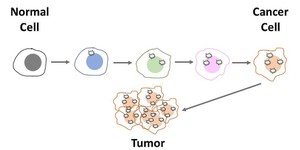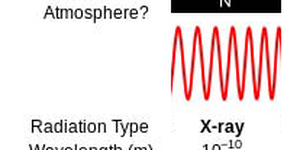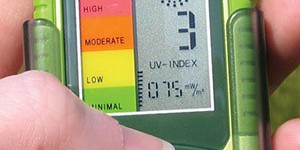Science Projects (75 results)
Browse Science Projects
Over 1,200 free science projects for K-12. Browse by subject, grade level, or try our Topic Selection Wizard to find your winning science project. With science projects in 32 different areas of science from astronomy to zoology, we've got something for everyone!
Let us help you find a science project that fits your interests, with our Topic Selection Wizard.
15 Best Science Projects - Our Scientists’ Picks
|
Select a resource
Sort by
|
Getting started with machine learning is like unlocking a new world of possibilities, and the best part is that you don't need to be a computer genius to do it! In this project, you will create a K-Nearest Neighbors (KNN) machine learning model that can predict whether a patient has a benign tumor or malignant breast cancer based on the characteristics of the tumor cell nucleus, such as its radius, perimeter, area, and smoothness.
Read more
Featured
Have you heard that garlic powder is supposed to inhibit the growth of bacteria? Which do you think would make a better disinfectant: a solution of garlic powder or a solution of bleach? This project shows you a straightforward way to compare the effectiveness of different disinfectants (or other antimicrobial agents), by measuring zones of inhibition on a culture plate.
Read more
What is cancer? How does it develop? Doctors and scientists have asked these questions for hundreds of years to understand cancer and find treatments. In this science project, you can investigate these questions too by building a simple model and exploring how environmental and genetic changes affect the development of cancer.
Read more
New
Drones are small, fast, and maneuverable - this can make them very hard to knock down! Check out this Mark Rober video where he explores both how professional defense companies and some backyard YouTube engineers tackle the problem of knocking drones out of the sky. Can you take this engineering challenge on yourself? What methods can you devise to take down a drone? Which one works the best?
Drones can be expensive, and you probably do not want to risk damaging a $1,000 drone for your science…
Read more
Have you ever wondered how X-rays affect living organisms? You have probably had X-rays taken at the dentist's or
doctor's office. These X-rays are considered to be relatively safe, but every X-ray exposes a person to some radiation,
specifically electromagnetic radiation. Radiation is energy that travels through space as either waves or high speed
particles. Watch this video to learn more about electromagnetic radiation.
When the energy in X-rays encounters an object, it can…
Read more
One thing that all living things have in common is that they grow through cell division. How is this growth regulated? Sometimes growth occurs when it is not supposed to, leading to cancer. Scientists are trying to discover how growth is regulated, hoping to find potential cures for cancer. One idea is that cells keep track of growth using special regions of the chromosome called "telomeres" that count how many divisions a cell has made. If this is true, then growth, cell division and age are…
Read more
First came the Human Genome Project and now (drum roll please) the Human Proteome Project. Confused? Not surprising as the Human Proteome Project has not received the kind of press that the Human Genome Project did. Nonetheless it is a major, and potentially important, scientific undertaking. Just as the genome is the complete set of an organism's DNA, the proteome is all the proteins expressed in an organism. Why study the proteome? It is because proteins are the work horses of biological…
Read more
New
Have you ever noticed that on a hot day, it's more comfortable to wear a light-colored shirt than a dark one? Or that it's cooler in a park than walking down a street? This happens because different surfaces absorb and reflect heat in different ways. Urban heat islands are parts of cities where man-made surfaces like pavement and buildings replace natural surfaces like grass and trees. In this project, you will use temperature and satellite data to see if certain areas in a city have higher…
Read more
In a survey conducted from 2007 to 2010, the U.S. Centers for Disease Control and Prevention reported that about 49% of people in the United States had taken at least one prescription drug during the past month, and about 22% of people had taken three or more prescription drugs. People are prescribed drugs all the time, but prescriptions can be dangerous because people can have different responses to drugs. These responses largely have to do with genetic mutations. Why are some genetic…
Read more
It's true that the light from the Sun provides the heat and light we need to survive here on Earth, but it also poses a threat. Ultraviolet (UV) rays in sunlight cause damage that can lead to early skin aging and even skin cancer. In this science fair project, find out when you need the most protection from UV rays by using a personal UV monitor to measure how the level of ultraviolet light changes during different parts of the day.
Read more
Many people are surprised to learn that the season's we experience—winter, spring, summer and fall—have nothing to do with the distance of Earth from the Sun. In this science fair project, you will investigate how the temperature on Earth actually depends on the tilt of Earth's axis of rotation.
Read more
Maybe you know someone who smokes, and you want to help them to quit. They've probably already told you how hard it is to stop once a person has started smoking. This project tries to answer the question: What is the most effective way to stop smoking?
Read more
Humans are bipedal, which means we walk using two legs. This gave humans an adaptive advantage during the evolution of humankind. Being bipedal gave humans additional speed, balance and flexibility used for walking, hunting or traveling long distances. However, we may have lost the ability to climb or swing in trees like other primates. How much faster can you go when you are bipedal? Have a race with your friends using two legs, and then four legs (use your arms as your 3rd and 4th legs).…
Read more
|













